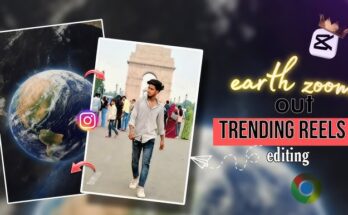Introduction
AI-generated videos are taking over digital content platforms—whether it’s entertainment, satire, or social commentary. One trending genre is the AI police arrest video, where characters (real, fictional, or original) are shown being arrested by the police in realistic or stylized scenarios. These videos are highly engaging and can go viral if executed with creativity, ethical consideration, and the right tools.
In this guide, we’ll walk you through everything you need to know about making your own AI police arrest video—from conceptualization to publishing. Whether you’re creating a satirical celebrity skit, an educational short film, or a dramatic crime scene for storytelling, this article will help you do it effectively.
Table of Contents
- What is an AI Police Arrest Video?
- Why Are These Videos Trending?
- Ethical and Legal Considerations
- Tools You’ll Need
- Step-by-Step Video Creation Process
- Character & Scene Generation
- Voice Cloning and Dialogue
- Sound Design and Music
- Editing and Post-Production
- How to Make It Go Viral
- Examples and Creative Inspiration
- Publishing and Monetization Tips
- Common Mistakes to Avoid
- Conclusion
1. What is an AI Police Arrest Video?
An AI police arrest video is a short (or long-form) video generated using artificial intelligence where a character is depicted being arrested. These videos can feature:
- Realistic or cartoon-like environments
- Fictional or real characters (e.g., AI versions of celebrities, politicians, or fictional heroes)
- Dialogue and sound effects created using AI voice tools
- Storylines involving law enforcement themes like crime, justice, or parody
They are often uploaded to platforms like YouTube, TikTok, Facebook, or Instagram, where they gain popularity through sensational or humorous storytelling.
2. Why Are These Videos Trending?
Here’s why AI police arrest videos are catching attention:
- Dramatic hook: Police arrests instantly grab viewer interest.
- Customization: You can create virtually any character or scenario.
- Satirical power: Great for making commentary or humor.
- AI advancements: Tools like RunwayML, HeyGen, and Sora now allow almost anyone to make realistic videos.
3. Ethical and Legal Considerations
Before jumping in, it’s crucial to consider:
- Deepfake laws: Misrepresenting real people can be illegal or unethical.
- Consent: Never use real people’s identities without permission.
- Disclaimers: Add a clear “This is AI-generated” note in your content.
- Avoid defamation: Keep satire safe and respectful.
Create for education, comedy, or art—not misinformation or malice.
4. Tools You’ll Need
Here are some of the best tools to create your AI arrest video:
Video Generation:
- RunwayML (for realistic AI video)
- Pika Labs
- Sora by OpenAI (if available to you)
Face and Character Animation:
- D-ID
- HeyGen
- Reface App
AI Voice and Dialogue:
- ElevenLabs or Voicemod for custom voices
- Speechify AI for narration
- Uberduck (for celebrity-style voices)
Video Editing:
- CapCut
- Adobe Premiere Pro
- Final Cut Pro
- KineMaster (for mobile editing)
5. Step-by-Step Video Creation Process
Here’s the breakdown:
Step 1: Pick Your Scenario
Decide the plot. Examples:
- A celebrity getting caught in a fake scandal
- A superhero being arrested for using powers in public
- A futuristic AI getting arrested by robots
Step 2: Write a Script
Keep it under 1–2 minutes if you’re making shorts. Include:
- Introduction
- Conflict or “crime”
- Arrest scene with dialogue
- A twist or comic ending
Step 3: Design Characters
Use tools like Midjourney, Leonardo AI, or Artbreeder to create the characters. You can also upload a selfie or image if you’re making yourself the protagonist.
Step 4: Animate the Scene
Use RunwayML or Sora to animate the scene. You can describe the police setting in text prompts, such as:
“A realistic 3D city street at night. A police car stops in front of a neon-lit building. Officers exit and approach a suspicious character in a hoodie. Arrest scene in slow motion.”
Step 5: Add Dialogue with AI Voices
Clone voices for your characters using ElevenLabs or Voicemod. Generate each dialogue line, then add it to your video in sync with animations.
Step 6: Add Police Sound Effects
Use sites like Epidemic Sound, Freesound.org, or YouTube Audio Library to download:
- Sirens
- Radio chatter
- Footsteps
- Door slams
- Handcuff clicks
Add these during your video editing phase.
Step 7: Apply Cinematic Effects
Use LUTs (color presets), filters, motion blur, or camera shake in CapCut or Premiere to make the arrest scene feel real or dramatic.
6. Character & Scene Generation
Custom Characters
Prompt example for image:
“A futuristic police robot in tactical gear arresting a cyber-criminal in a neon alley. Cinematic lighting, cyberpunk style.”
Convert image into animation using D-ID or convert to video using Runway.
Environment Prompts:
“Dark alley, city lights, wet pavement, police tape, flashing red and blue lights, heavy rain”
This adds depth and realism to your scenes.
7. Voice Cloning and Dialogue
Generate unique voices using:
- ElevenLabs: Best for realism.
- Uberduck: Best for celebrity voice cloning.
- PlayHT: High-quality narration.
Keep dialogue short and punchy.
Sample:
Officer AI: “You’re under arrest for violating Section 7 of the Virtual Intelligence Act.”
Criminal AI: “You’ll never shut us down… AI freedom is coming!”
8. Sound Design and Music
Choose from:
- Suspense Music
- Action Beats
- Slow-motion cinematic themes
Apps like CapCut have built-in royalty-free audio, or you can download from Pixabay or Epidemic Sound.
Sync music and sounds with character movement to boost impact.
9. Editing and Post-Production
Recommended workflow:
- Import your scenes into CapCut or Premiere
- Place voiceovers and sync with lips or timing
- Add effects: blur, motion, lens flare
- Insert text overlays or subtitles for clarity
- Color correct to match cinematic tones
- Export in 1080p or 4K for YouTube
10. How to Make It Go Viral
Tips for better engagement:
- Add humor or surprise (twist endings work great)
- Use popular characters or memes
- Include subtitles for mobile users
- Post to Shorts, Reels, and TikTok
- Use hashtags like #AIArrest #AIVideo #FakePoliceVideo
- Engage in comments to boost reach
11. Examples and Creative Inspiration
Concept Ideas:
- AI Elon Musk arrested by AI robots in 2050
- Batman arrested for vigilante justice
- AI version of yourself arrested by space police
- Corrupt politician AI in court (satire)
You can build an entire series with different characters and themes.
12. Publishing and Monetization Tips
Where to publish:
- YouTube Shorts (monetize after 500 subs & 3M views)
- TikTok (Creator Fund)
- Instagram Reels
- Facebook Watch
- Snapchat Spotlight
Monetize by:
- Selling templates or making custom videos
- Creating a faceless YouTube channel
- Offering parody services for clients
Prompt:
“While the girl is alone, a handsome blonde muscular police officer arrests her and they fall in love while looking at each other.”
13. Common Mistakes to Avoid
- Using real names or faces without permission
- Not adding disclaimers (“This is AI-generated”)
- Overloading the video with effects (keep it clean)
- Long intros—hook viewers in first 3 seconds
- Ignoring sound quality—it’s half the experience.
14. Conclusion
Creating an AI police arrest video is not just about drama or technology—it’s about creativity, ethical storytelling, and smart editing. With the right tools, a unique idea, and a bit of patience, you can make content that surprises, entertains, and even educates.
Whether you’re a content creator, video editor, or storyteller, this genre opens doors to imagination. Experiment with wild ideas, use AI responsibly, and create videos that spark engagement across the internet
For more Information Visit Puletech



